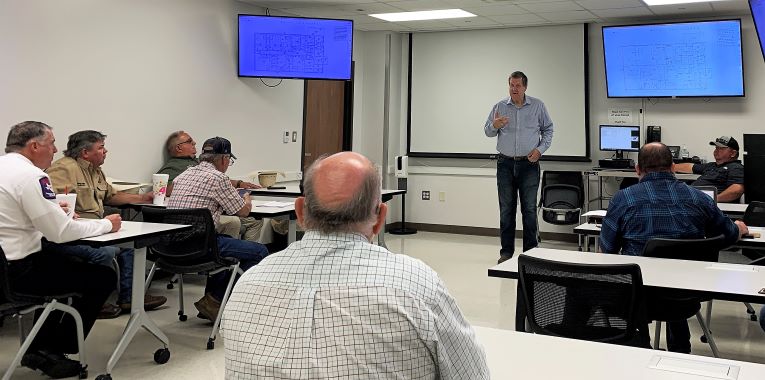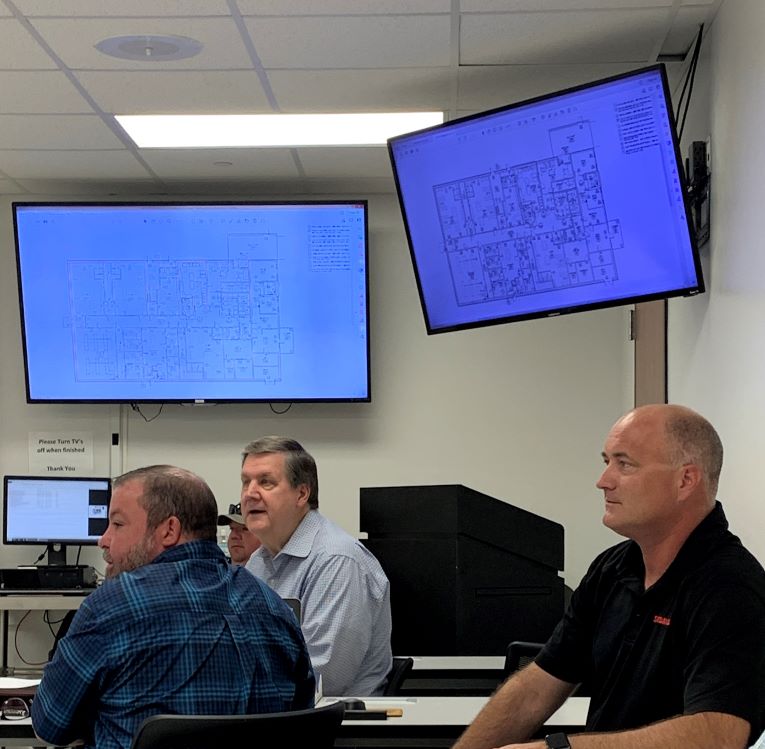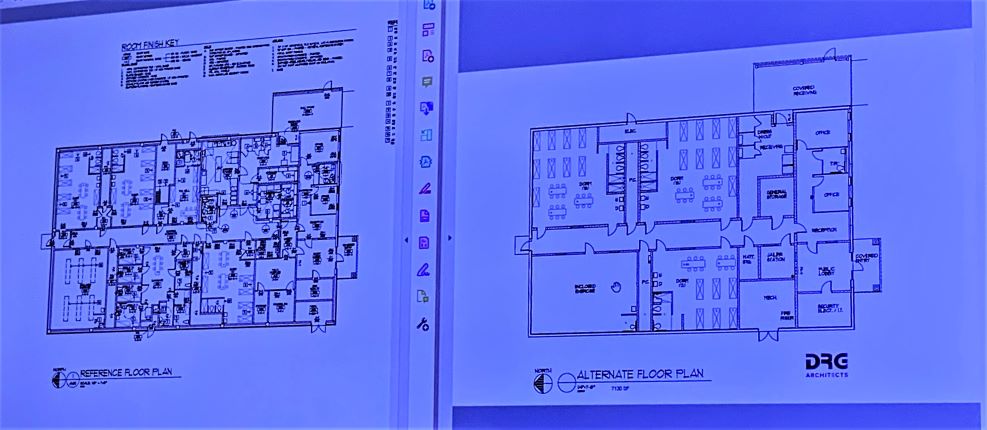Hopkins County Commissioners Court, auditor, fire marshal, and sheriff and jail personnel discussed with architects and construction-manager-at-risk what the next step should be – or if there should be a next step – in the pre-construction process for a new a trusty housing facility, which currently is projected to cost nearly twice the original construction budget allocated for the project.

The county contracted with Sedalco for the construction of a new facility on county-owned property just across from the current jail facility. Hopkins County officials budgeted about $4.5 million of the $7 million allocated to Hopkins County in American Rescue Plan funding to construct a building to house male inmates who have been designated as trusties, and as such go out into the community to work daily, including on precinct crews, at schools, the Civic Center and other locations.
The trusty facility would better segregate the inmate trusties from the general inmate population at Hopkins County jail when they return from their work details. The county officials cited the project as a measure to help reduce potential spread of COVID or other infectious illnesses from trusties who are out in the public or working alongside those who are around others in public, where they could be potentially exposed to illnesses.
By doing so, the county would be meeting the “response to COVID pandemic for public health and the health of the general inmate population of the Hopkins County jail,” an allowable use under the ARP guidelines, county officials said when announcing the project.
Moving the trustees out of the current jail facility would also free up space to house more inmates in general population, as well as federal inmates, for whom the county receives funding to house.
The unit as proposed is to house up to 48 inmates. The most recent projections, although not final or firm numbers, would require approximately $7 million to build a maximum security facility. An alternate plan for a low security facility was presented during Tuesday’s meeting as a potential more cost effective option, if the county chooses to continue with the project. Continually increasing construction costs and supply chain issues were cited as the major causes for the inflated costs. Sedalco reps indicated they’ve been told after bids are taken and order placed, it could be 52 weeks before they arrive.

One Sedalco representative told the court that where in the past construction costs increased on average 4-6%, they are not increasing that much per month. DRG Architects Principal and Architect Wayne Gondeck said. Where as the current jail, a voter approved bond project, only cost about $200-$300per square foot whereas current rates are $400-$500 per square foot and could rise as much as $250 more. Thus, the county will need to come up with an additional $2-3.5 million, not financed but in the bank that a check can be written for.
The draft presented Wednesday would be significantly scaled back to better meet intended budget. It would sacrifice single cell units, a kitchen and laundry, and multipurpose and counseling center.
County officials asked if local labor, including inmate labor, could be used for some of the project such as ground work and painting, thereby, reducing some of expenses. One commissioner asked if they could send someone with truck and trailer to get materials instead of having them shipped or trucked in at a fee. They were told some suppliers have freight companies they contract with for that service.
The architects asked for someone to put together information on what they would part of the project they would like to assume responsibility for completing. The architects then projected it would take another 2-3 weeks before they have another draft and proposal.
Proposed in the down-scale was reducing the building from about 10,000 square feet to 7,000-8,000 square feet, but that would only reduce costs by a couple of hundred-thousands of dollars. One cost savings could be in type of table sand chairs purchased to furnish the building.
Consultant Beth Wisenbaker reminded the gathered officials a few of the limitations of the funding. The funding must be committed by 2024 and spent by 2026, according to the most recent specifications set. The ARP funding cant be used to create or pay off debt, nor paid toward pension.
The balance in the account currently is $4.8 million. The amount designated for the project is $4.5 million, and DRG’s fees would come from that. She reminded the county officials that part of the designated funding has also been committed to Martin Springs tower, which has to be repairs.
County Auditor Shannah Aulsbrook noted that the county does not have an extra million to spend on this project, especially not with the continually rising fuel costs, which will impact how much the county is able to allocate to road and bridge building, and all other operations. While the county’s had a few good years, inflation could change change that in the next couple of years.
Wisenbaker said the county would be out about $20,000 on architectural fees to this point, per the terms of the contract signed, if they choose not to move forward with the building.
Chief Deputy Tanner Crump said going ahead with a low risk facility would free up that much bed space in the jail across the street to house additional general population and federal inmates. That should extend the amount of time after the current bond is paid off by at least 5 years before another would be needed to expand for maximum security or for improvements at the current facility. That would give the county more flexibility and space until those funds are realized.

Discussed was constructing the new facility, but doing so in a way that it could be converted to a maximum security facility later on or expanded as funds and need are available or require. That would likely add cost and require additional measures such as additional doors and detention door controls, which add to the cost.
Where and how a recreational area should be incorporated for the jail trustees housed in the new facility was also a topic of discussion. Costs for a water retention pond, the need for a safety vestibule, fully paved parking area, how and the type of bunks or bedding to put in the building, a need for washers and dryers in the facility for inmates to use for their clothing, and covered area were also among the topics covered during the meeting.
“I think we need to see what we can get done for $4 million,” Tatum said.
The court agreed, asking that DRG make changes and get those to Sedalco, so that the business can come back the court with hard numbers for the county officials to consider approving.





